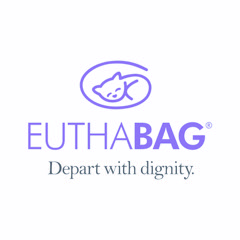Written by Summer Brooks, MS, RVT.
This blog article was inspired by a conversation on the Companion Animal Euthanasia Discussion Group Facebook page. A member posted:
“I’ve had a few difficult (emotional) cases recently and someone suggested I create a small ritual for myself to complete after a hard or emotional case. I often light a candle, but wondering if anyone else has ideas or things they do for themselves. I would like to do something to help honor the animal and the people involved (including myself) so it will be easier to move on from these situations.”
Colleagues in the group responded with many ideas, for both honoring rituals and for self-care. The discussion led me to wonder about the components of an honoring ritual, and how veterinary professionals might create one. Here is what I found…
What is a ritual?
A ritual is a symbolic and structured activity that marks life events and transitions, and offers an outlet for one’s emotions. A grief ritual focuses on honoring a loved one who has died, and reflecting on one’s relationship to the deceased. According to Castle and Williams (2003), grief rituals have four elements:
1. Rituals incorporate symbols that represent one’s emotions and intentions. A symbol can be something tangible, such as a photo, keepsake, work of art, or figurine. It can also be intangible, for example poetry, music, prayer, etc…
2. A ritual is “a personally meaningful experience that provides a sense of safety and sacredness and allows for the expression of emotions” (Limbo et al., 2018).
3. The ritual is structured and time-limited.
4. It is an opportunity to remember and reminisce
How can I create my own ritual?
Based on these elements, find symbolic representations and ways to process your emotions in a way that is meaningful to you. Your ritual doesn’t have to be somber, nor does it need to be linked to a specific religious or cultural tradition. You can choose anything that helps to comfort you, gives you strength, allows you to reflect on your work, and honors the animals and people involved. Barbara Karnes, a hospice nurse and end-of-life educator gives an example of what she calls a closure ritual. “Consider creating a simple, special place, for example, with a flower and a candle. As you light the candle bless your day, the good you offered and then blow out the candle as you release the work day” (Karnes, 2020).
Ritual Ideas
Ideas gathered from the CAETA Facebook Discussion Group and some adapted from Montross-Thomas et al., 2016, and Karnes, 2017.
– Write a sympathy card
– During the euthanasia, thank the animal for being good, tell them you love them
– Write the pets’ names on a chalkboard, erase periodically (for example weekly, or when they transfer to the crematory)
– Light a candle
– Make a donation in honor of the pet
– Buy a flower and put it in a place of honor in your home or office
– Keep a journal or jar with your patients’ names and blessings or comforting quotes
– Take a walk in nature to clear your mind
– Write the pets’ names on a rock with a Sharpie pen. The names will fade/wash away, symbolizing the end of your journey with them
– Find an uplifting prayer, song lyric or poem to recite at the end of the day
– Thank the animal for allowing you to be a part of their journey, and wish them well
– Say a prayer that the family may find peace and comfort
How can rituals help healthcare professionals?
Engaging in grief rituals has also been shown to enhance job satisfaction, promote resiliency, and reduce stress (Montross-Thomas et al., 2016, Limbo et al., 2018, and Running, Tolle & Girard, 2008). Rituals can also “relieve anxiety and provide comfort, meaning and support… [and] may be an important way to increase compassion and decrease burnout among hospice staff” (Montross-Thomas et al., 2016 p. 1043).
Have these ideas inspired you to create your own ritual? Join the discussion on the CAETA Facebook Discussion Group.
References
Castle, J. & Phillips, W.L. (2003). Grief rituals: Aspects that facilitate adjustment to bereavement. Journal of Loss & Trauma, 8(1), 41-71.
Karnes, B. (2017). You need care too. BK Books.
Karnes, B. (2020, April 22). Frontline workers, do you have self care rituals? Barbara Karnes, RN.
https://bkbooks.com/blogs/something-to-think-about/front-line-workers-do-you-have-self-care-rituals
Limbo, R., Walter, M.A., Hensel, M., & Koch, M. (2018, October 7). Resolve Through Sharing Bereavement Training, [Online continuing education course]. Gundersen Health System.
https://www.resolvethroughsharing.org/bereavement-training
Montross-Thomas, L.P., Scheiber, C., Meier, E., & Irwin, S.A. (2016). Personally meaningful rituals: A way to increase compassion and decrease burnout among hospice staff and volunteers. Journal of Palliative Medicine, 19(10), 1043-1050.
Running, A., Tolle, L.W. & Girard, D. (2008). Ritual: The final expression of care. International Journal of Nursing Practice, 14, 303-307.





